Autumn Olive , Elaeagnus umbellate— most widely know as Autumn Olive– is also called Japanese Silverberry and recently has come into fashion under the moniker Autumn Berry. The shrub is native to Asia, from the Himalayas, east, to Japan. In the United States it is often thought of as invasive, meaning that it “takes over”. More on this later.
Autumn Olive grows into a rugged shrub or small tree. It’s rarely over 15 or 16 feet tall. Young shrubs have sharp thorns on the branches that seem to be less present on older specimens. Leaves are elliptical or oval shaped with alternate leaves 2 to 3 Inches (3-5 cm) long. Edges are curled or wavy.
The shrub has unique leaves in that they sport silver flakes that make the shrub noticeable from a distance. Autumn Olive produces flowers in the spring that have a heavy, sweet fragrance and when the fruit comes on full, the branches can be bent to the ground with the weight. Birds love the fruit and thus the seed is spread far and wide. The yield is so great that a study by the USDA in Maryland demonstrated that the plant can produce a yield of 3600-12600 pounds of fruit per acre (400 to 14100 kg per hectare) without using fertilizers
or pesticides.
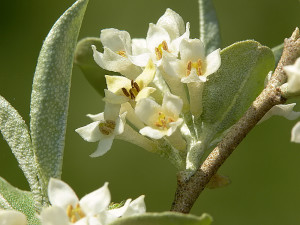
Autumn Olive Flowers
Autumn Olive is a great plant in the mind of most Permaculture designers as it is a nitrogen fixer that grows well in poor soil. Thus it naturally grows well where it will do the most good. Nitrogen fixation by plants is a process where nitrogen from the air is taken in by the plant and “fixed” into its roots, pods, leaves etc. When the plant dies, or sheds its pods and leaves, the nitrogen is released. The ability to fix nitrogen gives the plant an advantage over other plants in poor soils and thus Nitrogen fixers are often found in less than fertile fields and waysides.
Elaegnus Umbellate is quite vigorous. So much so it has made the USDA invasive species list. The Autumn Olive was at one time promoted and given away by the same government as a wildlife habitat shrub and windbreak. My brother planted some at home during high school. A complaint (in addition to it being “invasive”) about the shrub is that it creates a deep enough shade to prevent other plants from growing under it. Another is that it also produces a soil around itself so rich that some plants cannot grow in it. It is indeed prolific, and entire pastures can be taken over by it due to its heavy berry production. I have observed fields of 50 acres or more completely covered by it.
In Permaculture we want to make the problem the solution… So…the problem of a strong plant in a system can have the solution of producing a yield…another permaculture principle. The Autumn Olive is a fantastic shrub to plant as a nursemaid plant when planting productive plants such as fruit or nut trees. As the trees grow up together, the Autumn Olive is cut back each year, the cuttings dropped to the ground around the fruit or nut trees forming a nutritious mulch. Eventually, when the fruit/nut tree is established and the Autumn Olive finally dies from being whacked back each year, its decaying roots will continue to form nitrogen rich pathways for nutrients to reach the desired trees root system.
Of course the most obvious “solution” to the problem of Autumn Olive is to utilize it’s fruit. The Autumn Olive berry has a Lingonberry-like flavor. Most everyone loves the taste once the fruit has bletted (ripened to the point that fruit tannin and acids are replaced by sugars). And, as a bonus, Autumn Berry (as it is now fashionably called) is high in Lycopene, a chemical known for benefiting prostate health. Tomatoes are normally pointed to for this nutrient. Autumn Olive has about 18 times the Lycopene of Tomatoes!
We harvested Autumn Berry this past month. The berries are quite easy to harvest.
Making Autumn Berry into a Jam produced delicious results. We now have almost two dozen jars of lovely red jam to perk up cold winter mornings with toast. Autumn Berry can also be used as a wine base, used to scent candles, and made into a puree for all sorts of culinary fare, most notably, fruit leather.
I recommend whole heartily the Autumn Berry for your fall foraging opportunity. Once the birds start, near the peak of ripeness, the shrubs will be picked clean in days.
Autumn Berry Jam recipe ~ Holly Cooley
8 Cups Autumn Berry Juice/Pulp (extract pulp with juicer)
8 Cups sugar
4 tsp Lime or lemon Juice
2 cups apple juice
1 tsp Butter
Dissolve Sugar in pulp over low heat. Add all other ingredients. Be sure there is no undissolved sugar on side of pot or on spoon/utensil. Simmer, stirring occasionally, until the mixture “sheets” off the spoon (30-45 minutes estimated cook time). Volume will reduce by half. Makes 12 half pint jars with a little left over for snacking. For a more tart version, reduce sugar to 6 cups. Process to jars and enjoy!
Permaculture looks for solutions from problems. Elaeagnus umbellate is a great shrub that can be managed into a system in a way that takes advantage of its natural characteristics to obtain a yield, with few inputs.
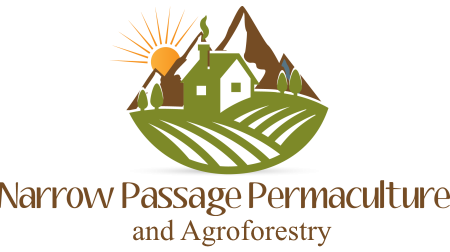

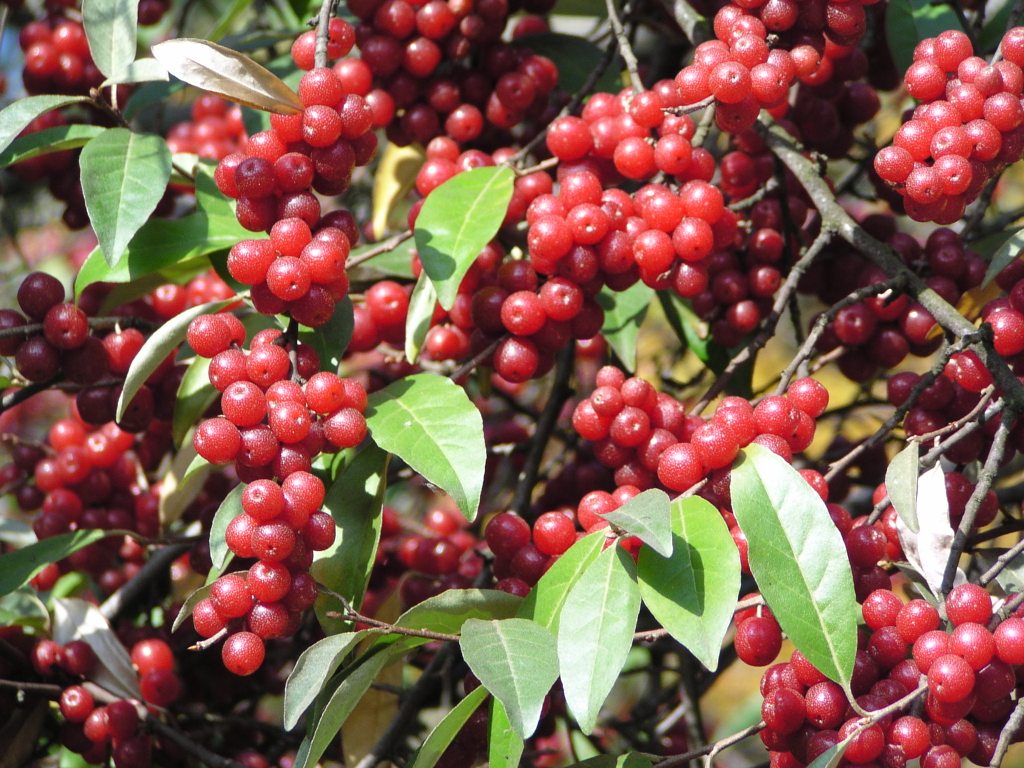
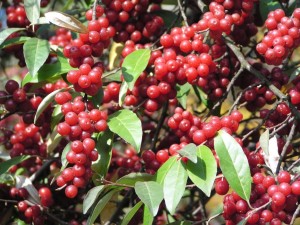
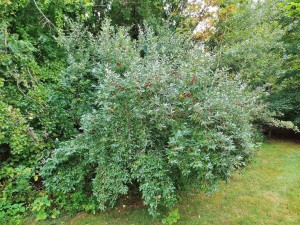
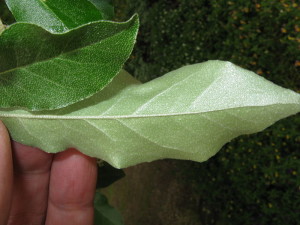
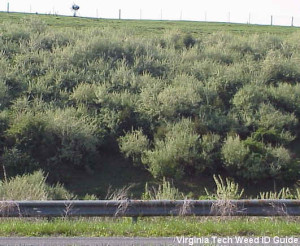
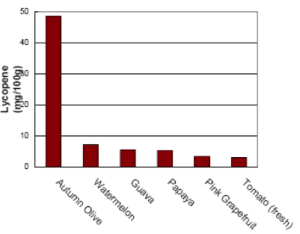
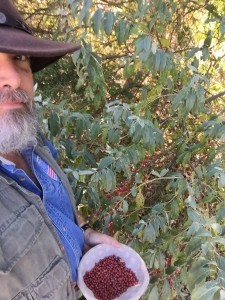
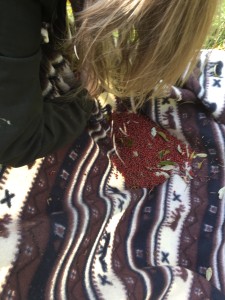
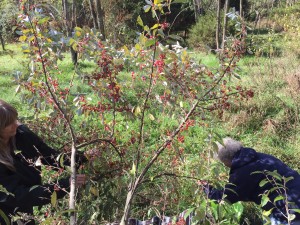
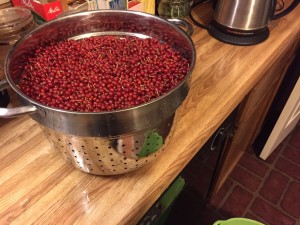
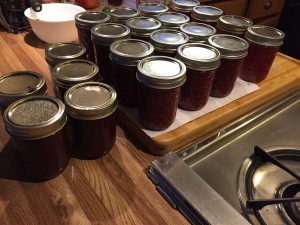
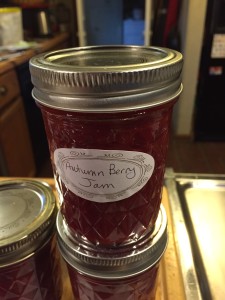
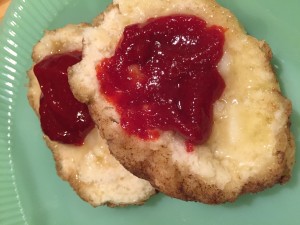
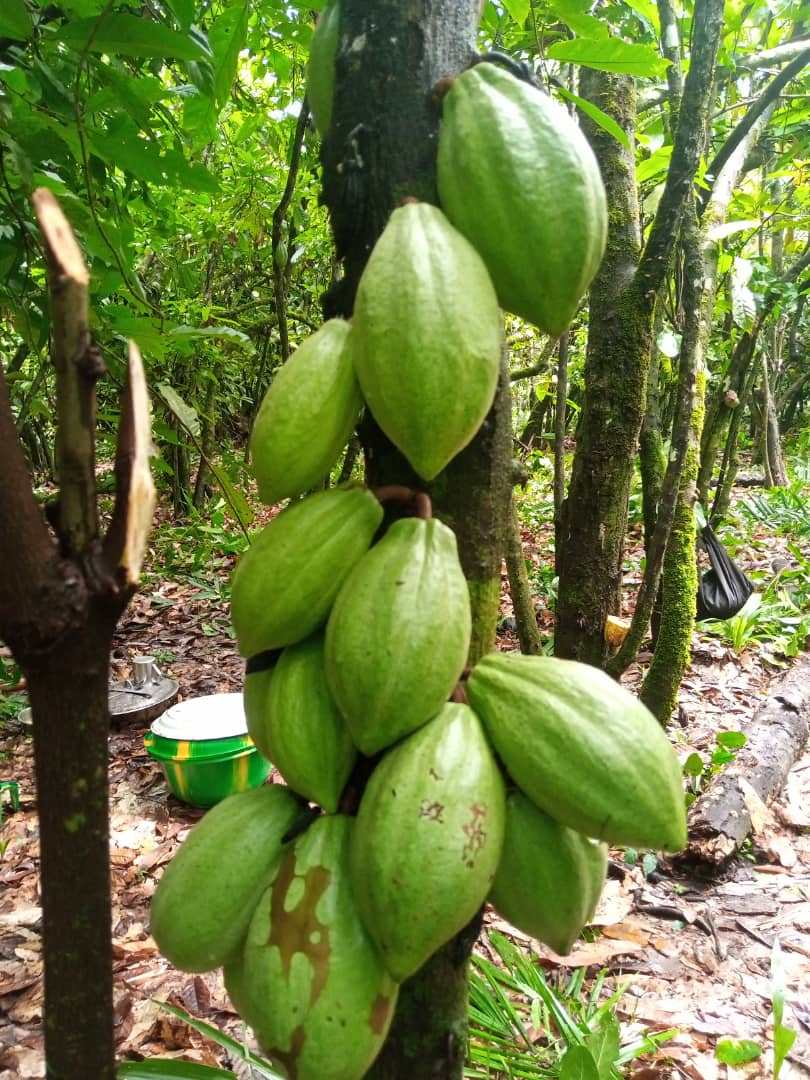
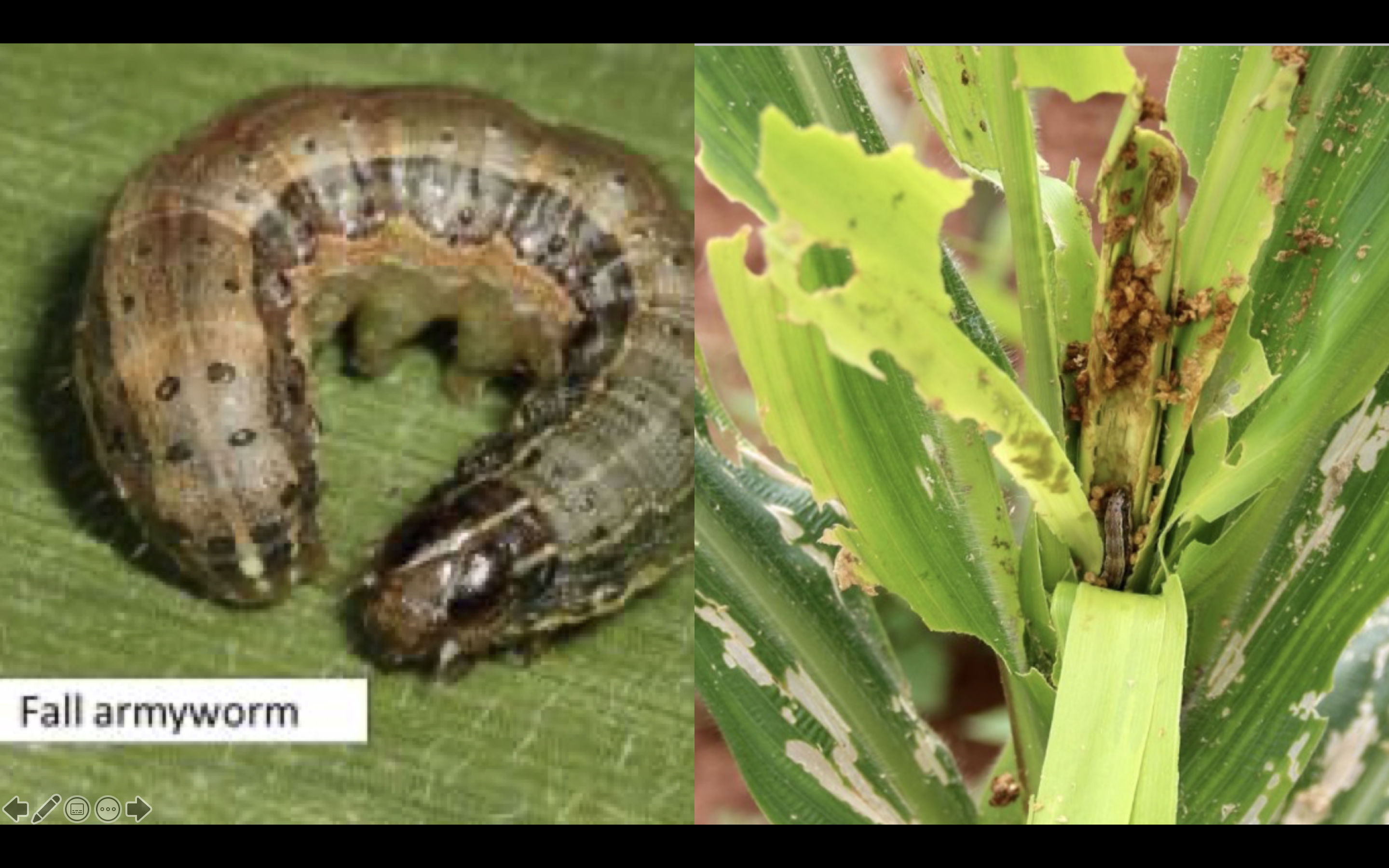

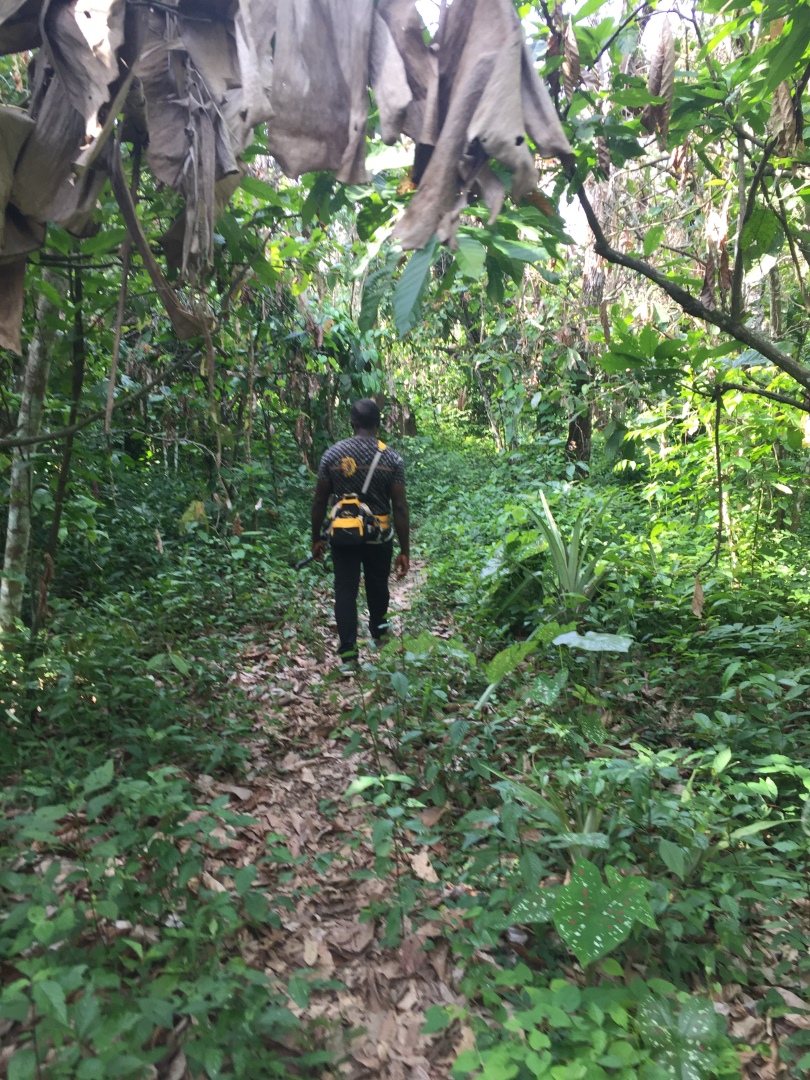
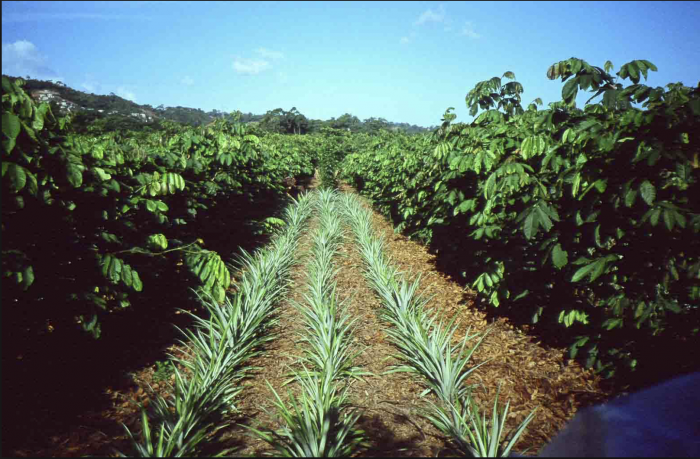
Great article and let me add if pasture is a goal that cattle will graze this plant flat to the ground. There is no such thing as a properly grazed pasture full of autumn olive, it just does not exist.
The reason we see it claim a field is so that the field can success to forest. You won’t find autumn olive deep in a forest only on edges. Soon as the trees get over it, its job is done and it dies into the same soil it built.
This plant isn’t an invasive species it is an earth medic and our people in charge are to dim to see it for the cure that it is to the very problem they created.
Anyway found your article in our new ReGen Ag Group, on Facebook it is being discussed there, you should come join us, great blog you have here.
https://www.facebook.com/groups/regenerativeagriculture/permalink/485818224929855/
Jack
Thanks Jack, I actually posted the link to ReGen Ag . I am a TSB MSB member and very glad you like the Blog!
Michael Cooley